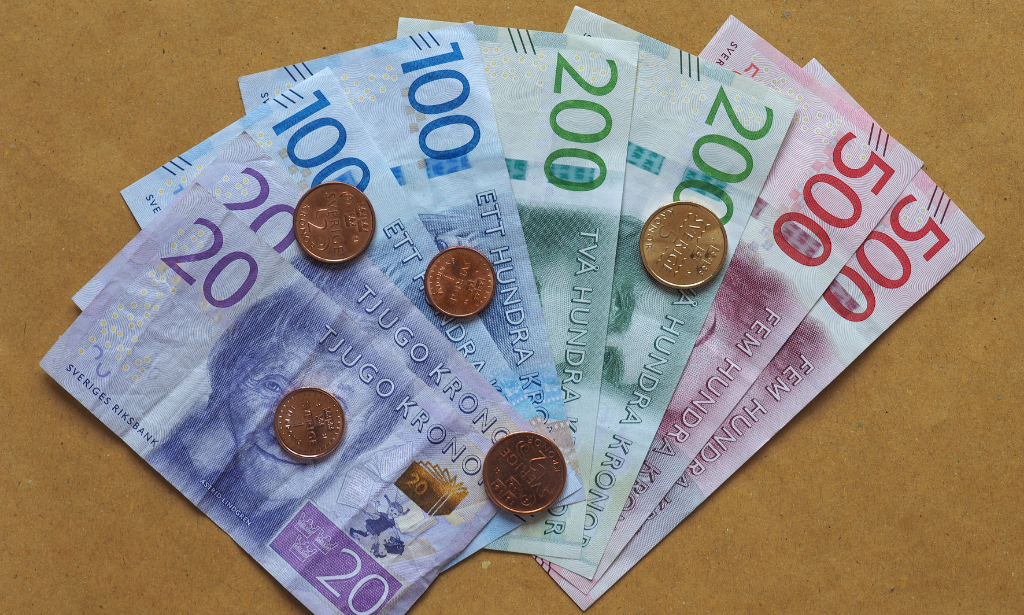The Riksbank left rates unchanged at 4.00% in their latest policy decision, but validated market expectations that the first rate cut could come as soon as May.
Despite this being explicitly signalled in the policy statement, the details of today’s monetary policy report make us think June remains the most likely start date for rate cuts. In particular, policymakers sounded several notes of caution around the inflation outlook, with krona weakness in particular continuing to be a notable theme. With the ECB unlikely to cut before June, the possibility of further SEK weakness alone should keep the Riksbank on hold in May. All told, while markets have interpreted today’s messaging as dovish at first glance, we suspect the Riksbank will ultimately prove a little more cautious. It is therefore not surprising to see an initial krona sell off reversed as traders digest the minutiae of the policy statement and the monetary policy report.
We continue to expect EURSEK to trade around the 11.4 handle in the coming months.
Admittedly, today’s policy statement scans as dovish at first glance, in particular the explicit guidance that “it is likely that the policy rate can be cut in May or June if inflation prospects remain favourable”. Indeed, the overall sentiment running through today’s communications would seem to indicate that the Executive Board is increasingly confident that inflation is set to return to target this year, opening the door for policy easing to begin over the next few meetings. To this point, the Riksbank noted that inflation is somewhat lower than they had expected. February’s figures showed CPI inflation at 4.5% YoY, CPIF at 2.5%, and CPIF ex-energy at 3.5%, all of which undershot expectations. Significantly, the board also noted that price changes in the shorter term are now in general close to 2% annualised, in effect coming close to declaring victory in their inflation fight. This increasingly positive view was summarised in today’s report, observing that: “with a generally more optimistic view of the Swedish economy’s inflation propensity, this means that a much lower forecast for the policy rate is now considered compatible with an inflation forecast that is essentially similar to the forecast from November”.
Given this, Riksbank staff significantly downgraded its projections for the repo rate. Not only did this remove the risk for a further hike this year, the new policy path now implies a 50% chance of a rate cut in May, a point noted by Governor Thedeen in his press conference, and a 100% probability of a rate cut happening by June.
Whether or not this can be taken at face value, however, remains an open question. This is especially pertinent given the Bank’s prior history of using these forecasts as a signalling tool, rather than an explicit guide on the actual likely path for rates. On this occasion though, we are inclined to think that it can be, given the benign domestic inflation developments.
New policy projections show a much more aggressive easing path is expected by the Riksbank

That said, today’s communications were not without a few notes of caution. In particular, the Executive Board highlighted upside inflation risks stemming from new supply shocks, the krona continuing to weaken, or companies’ pricing behaviour not normalising as expected.
Out of the three, we think krona depreciation stands out as the biggest threat to the Riksbank cutting rates in May, especially as the central bank’s inflation forecasts are predicated on the krona strengthening over the medium term. This is unlikely to materialise if the Riksbank cuts policy rates in advance of the ECB, who in turn appear to have settled on a June start date for policy easing. As noted in the report, a weaker krona than the Riksbank’s forecast would “contribute to higher inflationary pressures and mean that monetary policy needs to remain contractionary for a longer period”. To us this suggests that policy easing remains unlikely until June, despite today’s dovish signals.
If policymakers were in need of an illustration of the risks stemming from an earlier cut, they only need to watch how markets initially reacted to today’s decision, with the krona selling off sharply on the dovish headline messaging before subsequently reversing course.
Even with this, SEK has continued to trade with a modest softening bias post-announcement as May rate cut bets continue to build. Swap markets now see a roughly 85% chance of a rate cut at the next policy meeting, up from 60% yesterday. While the accumulating odds of a May cut could be validated by a softer March inflation reading, released on April 12th, if this corresponds with a further sell-off in SEK, we believe the outcome will be self-defeating. In summary, we think this risk should leave EURSEK to trade around the 11.4 handle, the top of its range, as the Riksbank joins its Norwegian colleagues in acutely monitoring FX developments to determine its next steps.
Author:
Nick Rees, FX Market Analyst
 Login
Login
